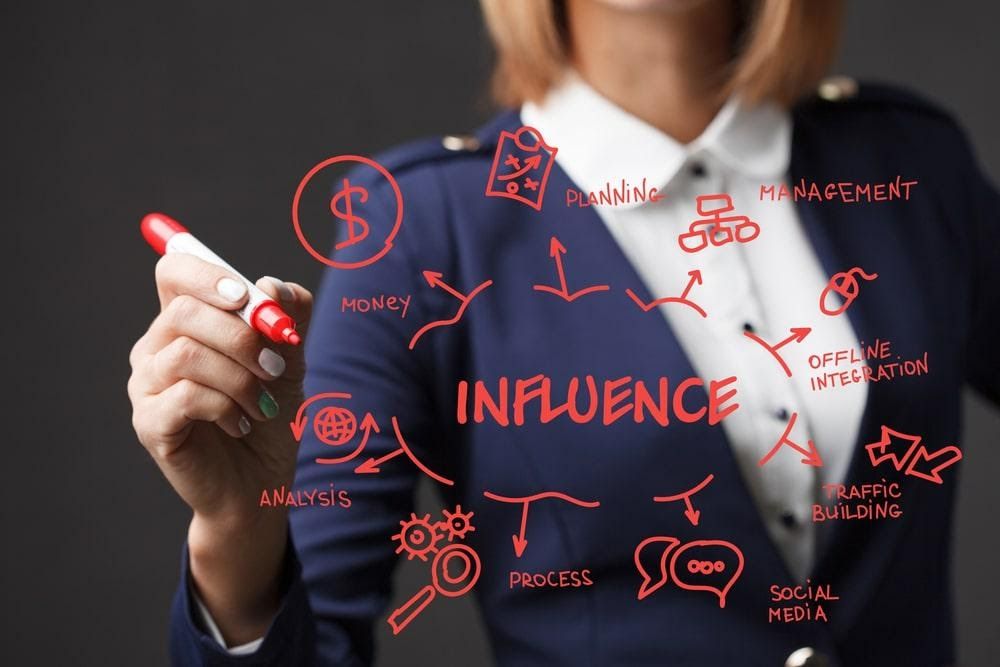You will likely agree that the COVID pandemic has disrupted the marketing industry. Businesses have been forced to rethink how they reach out to consumers as they tire of push advertising and overt sales pitches.
Instead, companies are turning to more authentic forms marketing, ones that offer a human touch and that offer more value in these uncertain times.
As a B2B company, the strongest strategy you can apply to meet this need is influencer marketing, which is good news because numbers are on your side.
According to one report, 78% of B2B marketers say that their customers rely on influencers for information. The survey also showed that 63% of the respondents believe that influencer marketing leads to better marketing results. Even better, another report shows that 91% of B2B transactions are at least influenced by word of mouth.
But let’s be clear, B2B influencer marketing differs from B2C. Because of that, it’s important to know what to expect and what the best practices are for working with influencers, especially during this crazy COVID pandemic.
The benefits of using B2B influencer marketing
Word of mouth and reputation are essential for any B2B marketing effort but especially now. Unlike any other, it has brought with it not only lockdowns, but it’s also stamped out traditional sales activity. For the first time ever, salespeople can’t travel to visit clients. They have been forced to sell via online video meetings.
Because the average B2B transaction is typically a substantial investment in resources, time and money, decision-makers are unwilling to make wild bets on B2B products and services they’re unfamiliar with – especially now.
Therefore, B2B decision-makers are reliant on business relationships, brand reputation, existing partnerships and more. Even so, there is still an atmosphere of uncertainty, an uneasiness because of COVID. So, gaining validation from third-party thought leaders can often be the needed push to keep the sales process moving forward.
With that said, some of the benefits that B2B influencer marketing can bring to the table include:
- A fresh perspective that can resonate with your B2B audience
- Added credibility
- Thought leadership that helps make your B2B products or services more visible and desirable
- Access to a network of industry experts and influencers
What you need to know before getting started with B2B influencer marketing
If you are just getting started with influencer marketing, then you need to manage your expectations. Although some of the basic rules work the same for B2C and B2B influencer marketing, there are some crucial differences that you need to be aware of before getting started.
1. Results can take weeks or months to bear fruit
With a B2C influencer marketing campaign, a celebrity can post something on Instagram about a product or service and sales can start rolling in almost immediately. Don’t expect the same results with B2B influencer marketing.
As stated earlier, a B2B purchase involves multiple decision-makers and the factors that a buyer must consider are varied and complex. Therefore, it usually takes at least several months for a B2B influencer marketing campaign to show results.
2. Look for people who are talking about similar brands to yours
Before you reach out to the big names in your industry, look for existing business partners, fans, and customers who are already associated with your brand. It’s likely that some of them are thought leaders have followings and publish content on a regular basis. Yet, if you are having trouble locating suitable influencers that way, there are some other methods to use.
Tools such as Onalytica can help you identify the influencers who are already using and talking about similar B2B products and services on social media. Even better, you may find some that are already using and talking about yours.
Another place to look for influencers is Thinkers360, an online community of B2B thought leaders, speakers, authors and analysts. They regularly publish leaderboards of top influencers in a variety of business niches.
It’s often easier and more effective to work with the people who have already shown brand affinity, especially now when the COVID pandemic has made people eager for more unfiltered, unscripted content. The same people are also looking for value in the form of quality guidance and ideas.
3. Go to the influencers who your B2B audience is actually listening to
When it comes to influencer marketing, most companies, both B2C and B2B, look at social reach as the main metric of influence. It’s natural to do so. However, while social media audience size is a factor when deciding which influencers to use in your campaign, it matters more to look for the thought leaders that your audiences are actually listening to, reading and watching.
It’s not the size of the audience that matters but who that audience is. An influencer with a few thousand followers may be just the person you need. So it is more about quality rather than the quantity.
Over to you
This year has been a challenging one, to say the least. COVID has caused the entire world to rethink how it does business and to implement new models and strategies.
If you haven’t already, then this is the perfect time to get started with influencer marketing and build relationships with the thought leaders in your niche.
Marketing trends come and go, but the value a trusted and reputable source of information to an audience looking for answers to their problems never gets tired.








